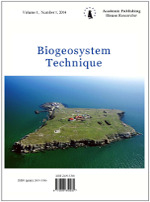Publishing Ethics
Ethical standards for publication exist to ensure high-quality scientific publications, public trust in scientific findings, and that people receive credit for their ideas. It is important to avoid:
- Data fabrication and falsification:
Data fabrication means that the researcher did not actually perform the study but instead made up data. Data falsification means that the researcher did the experiment, but then changed some of the data. Both of these practices make people distrust scientists. If the public is mistrustful of science, then it will be less willing to provide funding support.
- Plagiarism:
Taking the ideas and work of others without giving them credit is unfair and dishonest. Copying even from one sentence from someone else’s manuscript, or even one of your own that has previously been published, without proper citation is considered plagiarism—use your own words instead.
- Multiple submissions:
It is unethical to submit the same manuscript to more than one journal at the same time. Doing this wastes the time of editors and peer reviewers, and can damage the reputation of journals if published in more than one.
- Redundant publications (or ‘salami’ publications):
This means publishing many very similar manuscripts based on the same experiment. It can make readers less likely to pay attention to your manuscripts.
- Improper author contribution or attribution:
All of the listed authors must have made a significant scientific contribution to the research in the manuscript and have approved all its claims. Do not forget to list everyone who made a significant scientific contribution, including students and laboratory technicians.
The use of generative AI and AI-assisted technologies in writing for Cherkas Global University Press
This policy aims to provide greater transparency and guidance to authors, readers, reviewers, editors, and contributors in relation to generative AI and AI-assisted technologies.
Authors preparing a manuscript for Elsevier can use AI Tools to support them.
These tools must never be used as a substitute for human critical thinking, expertise and evaluation. AI Tools should always be applied with human oversight and control.
Authors should disclose the use of AI Tools for manuscript preparation in a separate AI declaration statement upon submission.
Cherkas Global University Press does not permit the use of generative AI or AI-assisted tools to create or alter images in submitted manuscripts. This may only include enhancing a specific feature within an image or figure.
The generative AI or AI-assisted tools can be used as a part of the research design or research methods. This use must be described in the methods section.








